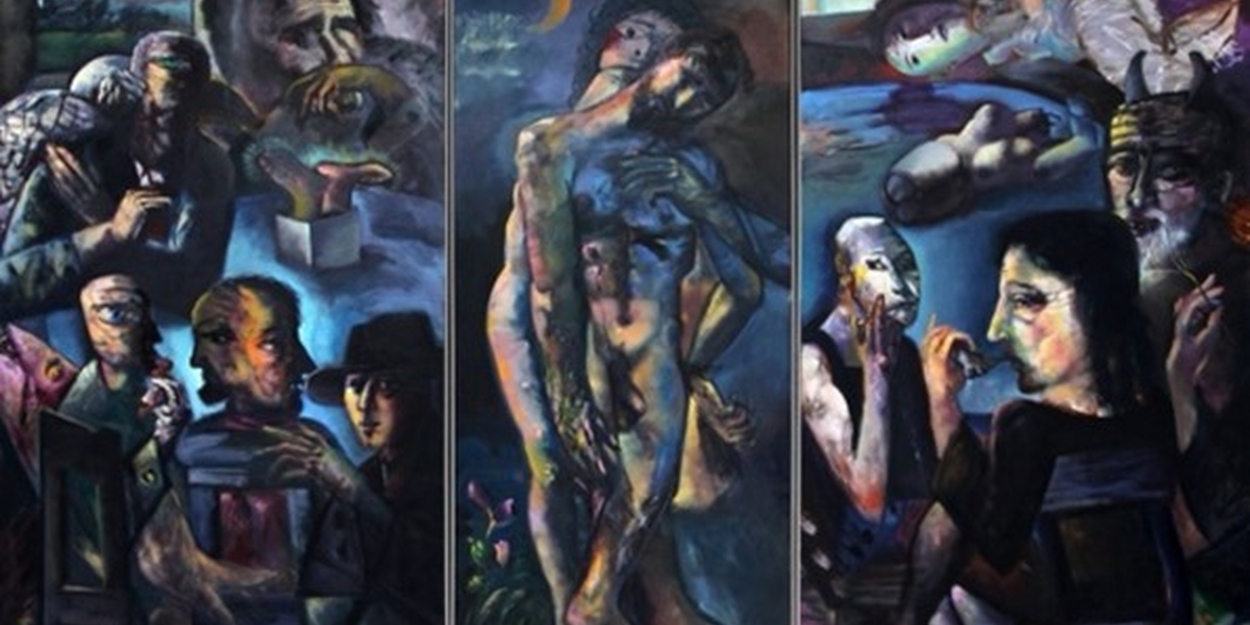John D. Calandra Italian American Institute Hosts Fall Exhibition 'Edward E. Boccia: Postwar American Expressionist'
The exhibition is curated by Rosa Berland, honorary director of The Edward E. Boccia Artist Trust, and will be on view October 29, 2024, through February 21, 2025.

The John D. Calandra Italian American Institute today announced its fall exhibition Edward E. Boccia: Postwar American Expressionist, featuring more than twenty works including paintings and drawings made between 1958-1995 and never-before-seen journals by the artist Edward E. Boccia (1921-2012). On view for the first time in New York City, the works in the exhibition provide a fresh perspective on what constitutes Italian American modernism. The exhibition is curated by Rosa Berland, honorary director of The Edward E. Boccia Artist Trust, and will be on view October 29, 2024, through February 21, 2025.
Throughout his long yet underrecognized career, Boccia developed a new genre of contemporary monumental panel painting that functioned as devotional art while raising questions about ethical, philosophical, and stylistic problems in twentieth-century America. Among the works on view is a large-scale example of the artist's renowned triptych series The Flesh Eaters (1996). An intriguing modernist work, the painting synthesizes the power of neo-expressionist religious storytelling, Cubist and Surrealist imagery, and the influence of Max Beckmann to reveal a singularly dark tableau expressive of the human condition.
An imaginative and technically gifted artist, Boccia produced work throughout his long career that explored what he called "the lyricism which sings thru every shaft of light and gesture from Venice to Sorrento (the 'eye' of Titian)" as well as the crisis of morality experienced in twentieth-century America in the face of war and consumerism. His bold paintings speak of longing and desire, loss, grief, and spirituality and yet remain deeply connected to the legacy of historical Italian art.
Exhibition curator Rosa Berland said, "While Boccia is largely absent from the public eye, the young artist's postwar recruitment to Washington University in St. Louis by Ken Hudson (among previous appointees such as Stephen Greene, Max Beckmann, and Philip Guston) reveals that in the mid-twentieth century Boccia was considered a key innovator. By reintroducing the visitor to Boccia's experimental work, this exhibition seeks to create new dialogue around the diasporic practice of this important and accomplished Italian American artist."
About the Artist
Edward E. Boccia (1921-2012) was born to Italian immigrant parents in Newark, New Jersey, and attended the Newark Arts High School, the Art Students League of New York, and Pratt Institute. Boccia served in World War II in the covert 603rd Camouflage Engineers unit known today as the Ghost Army. After the war, Boccia earned his BS and MA degrees from Columbia University with the aid of the GI Bill. He served as dean of the Columbus Art School in Columbus, Ohio, from 1948 to 1951. Upon arrival in St. Louis, Missouri, Boccia became a member of Group 15, joining such notable artists of the region as E. Oscar Thalinger, Fred Becker, and Werner Drewes. It was in St. Louis that Boccia would meet the philanthropist Morton D. May, who was the preeminent American collector of the works of Max Beckmann. May would become one of Boccia's most significant collectors. For more than thirty years, Boccia served as a professor of fine arts at Washington University, where he fostered generations of studio artists, thereby changing the landscape of American painting.
Boccia's large-scale panel paintings were widely collected in his lifetime and are found in numerous museum collections, and their popularity led to various mural commissions for Catholic and Jewish institutions in St. Louis. The artist was knighted a Cavaliere al Merito della Repubblica by the government of Italy, and Saint Louis University awarded him the Order of the Crown, King Louis IX, and made him an Honorary Vice President. Today, Boccia's art is represented in more than 600 private and public collections and is the subject of a monograph by Ms. Berland (Hirmer Verlag, Munich, 2025) and an upcoming documentary film directed by Eduardo Montes-Bradley of Heritage Film Project.

Videos

